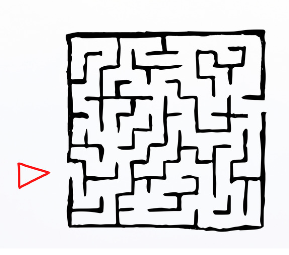How Can We Help?
Gathering a Baseline for Gleaning Organizations
 Gleaning organizations play a crucial role in reducing food waste and addressing hunger by recovering surplus food. However, for these organizations to maximize their impact and ensure sustainability, they need strong support systems. One key element is the gathering of baseline data, which helps measure success and tells a compelling story to funders. This article explores the significance of baseline data and how the support of a network strengthens the resilience of gleaning organizations in Washington state.
Gleaning organizations play a crucial role in reducing food waste and addressing hunger by recovering surplus food. However, for these organizations to maximize their impact and ensure sustainability, they need strong support systems. One key element is the gathering of baseline data, which helps measure success and tells a compelling story to funders. This article explores the significance of baseline data and how the support of a network strengthens the resilience of gleaning organizations in Washington state.
Importance of Baseline Data
Gathering baseline data is crucial for measuring success. It can help tell a compelling story to potential funders, help understand gaps and challenges and measure impact. In simple terms, establishing a data baseline involves developing standardized metrics that will serve as the foundation for monitoring progress and then getting feedback on those metrics. Many gleaning organizations already track key metrics, such as the number of volunteers, volunteer hours, budget, and staff hours, which they are required by law to do. These are essential starting points for building numerical baselines to measure not only impact but also progress towards network goals.
The Role of the Network
A supportive network is essential for helping gleaning organizations gather and use baseline data effectively. The Washington Gleaning Network offers resources, tools, and collaborative opportunities that help to streamline gleaning operations and grow the gleaning movement throughout Washington state. The network can connect gleaners with farmers, food banks, and volunteers, fostering collaboration and reducing labor duplication. By encouraging knowledge sharing, the WGN helps organizations adopt best practices in challenging areas like volunteer coordination, harvest scheduling, and resource allocation. This collective effort enhances the overall efficiency and impact of food recovery operations, benefiting both the community and the organizations themselves.
Challenges
Gathering meaningful data may involve overcoming challenges. Take, for example, the challenge in compiling data. Information needs to be gathered consistently and kept in an organized fashion, to prevent loss of important data and maximize the value of the information gathered. Common obstacles in data collection include concerns about data accuracy, which can be mitigated through standardized forms and proper training.
Additionally, before any data can be gathered, clear goals and metrics must be defined for how this information will be used. Carefully considering how survey questions or conversations are worded begins with knowing why that information is important and how it will be used. A lot of time and resources are used when creating this baseline information. A good rule of thumb is “measure twice, cut once”, or, in other words, if key metrics are prioritized and proper tools are used consistently to manage data effectively from the beginning, the end result can be accurate, efficient, and less prone to costly errors.
Understanding and Identifying Key Metrics
It’s important to recognize the nuances in the metrics used by gleaning organizations. For example, one common metric is the total pounds of food gleaned. However, this metric can be misleading since not all produce has the same value. A pound of potatoes, for instance, is not the same as a pound of cilantro, yet the standard within hunger relief often relies on poundage as a measure of success.
Therefore, to create a meaningful baseline, it’s essential to track specific metrics that matter most to gleaning organizations. Some key areas might include:
- Volume of Food Recovered: Tracking the amount and type of food gleaned over time helps planning for distribution and storage.
- Source of Surplus Food: Knowing where food comes from (farms, markets, orchards) helps identify productive partnerships.
- Distribution Data: Tracking where gleaned food goes (food banks, distribution centers) offers insight into impact.
- Labor and Resource Metrics: Metrics like volunteer numbers, hours, and resources are used to provide a holistic view of the operation’s scale and effectiveness.
Methods for Data Collection
Gleaning organizations can use various methods to gather data including surveys, field observations, and collaborations with partners such as farmers and food banks. Surveys for farmers, volunteers, and partner organizations can offer valuable insights into challenges and opportunities. Field observations, such as those collected by volunteers, help refine operational efficiency. Finally, partnerships with local farms and food banks give a broader view of the food landscape.
Technology can further assist in tracking and managing data, with software designed to streamline the collection and analysis process.
Utilizing Baseline Data
 Baseline data helps gleaning organizations improve their operations by:
Baseline data helps gleaning organizations improve their operations by:
- Enhancing Efficiency: Data can reveal patterns in food availability and volunteer engagement, helping to optimize scheduling and resource allocation.
- Measuring Impact: Baseline data allows organizations to quantify their value to stakeholders, such as funders.
- Tailoring Strategies: By understanding trends, organizations can refine their approaches to best meet community needs.
- Reporting and Fundraising: Accurate data strengthens reports, helping to secure future funding and resources.
Conclusion
By working together, sharing data, and learning from one another, the Washington Gleaning Network, in partnership with gleaners throughout Washington state, can enhance their resilience, operate more effectively, and play a larger role in reducing food waste and hunger in our communities. By providing a foundation for assessing impact, being part of a network helps gleaning organizations operate more efficiently, secure funding, and reduce food waste and more. A robust network that supports gleaners can significantly boost resilience, ensuring sustainable operations for the future and ultimately helping more food reach those who need it most.


